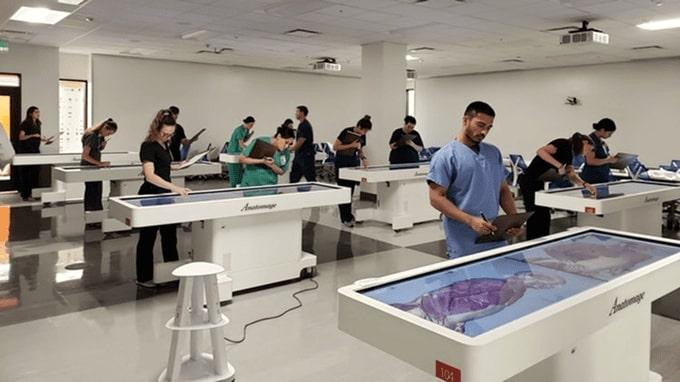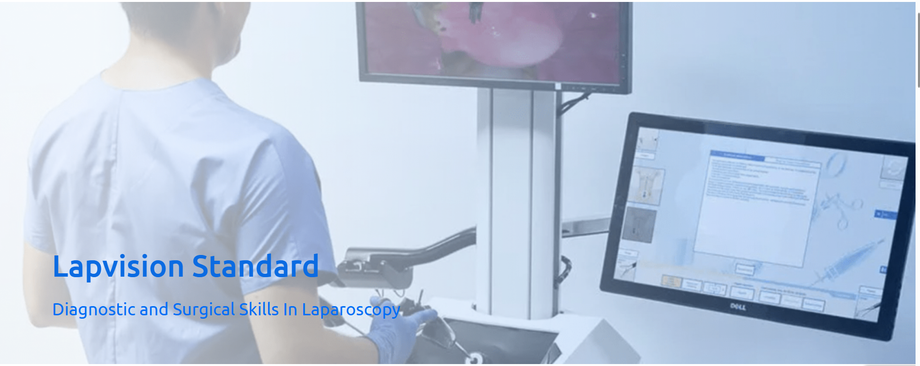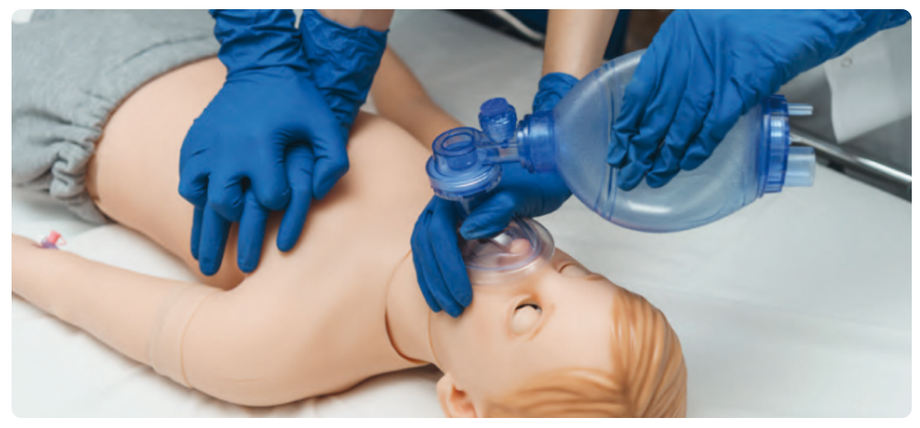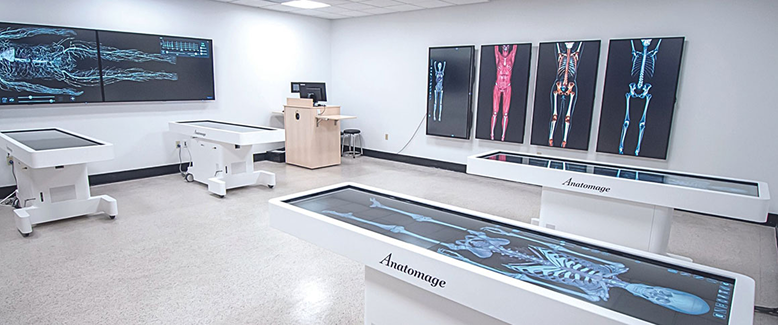Transforming Medical Education with Anatomage, Virtual Simulators & Digital Dissection Tables
Medical education is experiencing a paradigm shift. Traditional cadaver-based learning is increasingly complementedand sometimes replaced by high-tech innovations such as the Anatomage anatomy table, virtual reality laparoscopy simulators, and lung simulators for both adult and pediatric training. These tools enhance visualization, interactivity, and accessibility, offering a more precise, immersive, and repeatable learning environment.
In this article, we explore how technologies like the 3D anatomy table, Cyst & Abscess Removal Trainers, and digital dissection tables are shaping the future of healthcare education, particularly in India, where adoption is rapidly growing.
Anatomage: Bridging the Gap Between Technology and Medical Education
The Anatomage table has quickly become a game-changer in medical schools, dental colleges, and anatomy departments. Unlike traditional methods that rely on physical cadavers, Anatomage offers a high-resolution, 3D visualization of the human body. With its interactive touchscreen interface, students and educators can explore multiple anatomical layers from skeletal to muscular to vascular systems with surgical precision.
Key Features of Anatomage:
Full-body, high-resolution scans
Life-like anatomical accuracy
Real-time cross-sectional slicing
Integrated pathology cases
Easy updates and global case-sharing
The Anatomage table in India has gained traction among progressive institutions eager to blend clinical insight with cutting-edge tech. As the demand for digitally enhanced medical training increases, India is positioning itself as a growing market for such advanced educational tools.
Anatomy Table vs. Traditional Cadavers: Why It Matters
Cadaver dissection, while invaluable, has logistical, ethical, and environmental limitations. In contrast, the 3D anatomy table and digital dissection table provide reusable, accurate, and interactive learning experiences. The virtual dissection table allows for clean, consistent, and real-time exploration without the constraints of a physical specimen.
Advantages of Digital Dissection Tables:
No biohazard or preservation required
Allows repeated dissections with no degradation
Supports remote and collaborative learning
Comes with case libraries and integrated assessments
With India’s growing number of private medical colleges and increasing emphasis on digital transformation, the anatomy table India market is projected to grow significantly in the coming years.
Virtual Reality Laparoscopy Simulator: Enhancing Surgical Precision
As surgery becomes increasingly reliant on minimally invasive techniques, training tools must also evolve. The virtual reality laparoscopy simulator offers medical students and young surgeons the opportunity to practice essential laparoscopic skills in a risk-free environment.
These simulators are particularly useful for:
Basic and advanced laparoscopic procedures
Real-time feedback and skill assessment
Haptic (touch-based) simulation
Procedure-specific modules
Whether it’s performing a cholecystectomy or a suturing task, the VR laparoscopy simulator ensures learners get hands-on experience before they ever touch a real patient. They also promote hand-eye coordination, depth perception, and instrument control skills critical in modern-day surgeries.
Lung Simulators in India: Training for Critical Scenarios
With respiratory illnesses on the rise, the importance of training healthcare providers in pulmonary care cannot be overstated. This is where lung simulators in India play a pivotal role. These simulators replicate real-life respiratory mechanics, making them essential tools for teaching ventilation, auscultation, and diagnostic techniques.
From understanding asthma to managing ARDS, lung simulators offer a controlled setting for learning and experimentation. The growing demand for simulation-based learning in critical care units, nursing schools, and anesthesiology departments is fueling the popularity of these devices across India.
Adult and Pediatric Lung Simulators: Tailored Training for All Ages
In critical care, one size does not fit all. That’s why separate models for adult and pediatrics lung simulator are essential. Pediatric respiratory cases demand nuanced handling due to smaller anatomical structures and different physiological responses. These simulators mimic age-specific breathing patterns, lung compliance, and disease progression.
Benefits of Pediatric & Adult Lung Simulators:
Allows training for neonatal resuscitation
Simulates a wide range of pulmonary diseases
Compatible with real ventilators and diagnostic tools
Offers measurable feedback for performance evaluation
Simulation-based training with both adult and pediatric lung simulators helps healthcare workers become adept at handling diverse real-world scenarios without compromising patient safety.
Cyst & Abscess Removal Trainer: Building Hands-On Surgical Confidence
A relatively new but highly impactful training tool is the Cyst & Abscess Removal Trainer. This tactile simulator helps learners practice minor surgical procedures such as incision and drainage under realistic conditions. With simulated pus and tissue layers, trainees gain confidence in performing routine yet critical procedures.
Why It's Crucial:
Reduces patient risk
Reinforces sterile technique
Teaches correct incision placement
Improves procedural timing and precision
Incorporating Cyst & Abscess Removal Trainers into the clinical training curriculum ensures that even minor procedures are performed with expertise, reducing infection rates and improving patient outcomes.
Digital Dissection Table: A Leap Into the Future
The digital dissection table is a marvel of medical visualization. Unlike static charts or 2D textbooks, this interactive table offers dynamic exploration with a multi-user interface, ideal for group learning. These tables often come equipped with pre-loaded CT and MRI scans, providing a radiological context to anatomical study.
Features often include:
Touchscreen and stylus control
Integration with medical imaging software
Annotations and note-taking capabilities
Cross-platform collaboration
By combining radiology with anatomy, these tools help learners bridge the gap between diagnostics and dissection enhancing both clinical reasoning and spatial understanding.
3D Anatomy Table: A Multisensory Learning Experience
Today’s learners need visual, tactile, and interactive engagement. The 3D anatomy table ticks all these boxes by providing lifelike visuals and manipulation of organs, tissues, and bones. Whether for first-year medical students or seasoned surgeons, the ability to explore complex anatomy in 3D greatly enhances knowledge retention and understanding.
In India, the 3D anatomy table is being adopted by top-tier medical institutions, nursing schools, and research centers as a standard tool in anatomy labs. It facilitates self-paced learning, promotes inquiry, and bridges the gap between theory and practice.
Why India is Embracing Medical Simulation
India’s healthcare education landscape is rapidly modernizing. The government’s emphasis on digital infrastructure, rising private investment in healthcare, and growing awareness about medical simulation are accelerating the adoption of tools like the anatomy table, lung simulators, and virtual reality laparoscopy simulator.
Drivers Behind the Growth:
Shortage of cadavers for medical training
Demand for standardized and repeatable education
Pandemic-led acceleration of remote and virtual learning
Emphasis on patient safety and error-free surgery
Whether it's a virtual dissection table in Delhi or an adult and pediatrics lung simulator in Mumbai, India is poised to lead the way in adopting simulation-based medical education.
From the Anatomage anatomy table to advanced lung simulators and VR laparoscopy training tools, modern medical education is experiencing a technological renaissance. These innovations not only improve learning outcomes but also ensure healthcare professionals are better prepared for the real-world challenges they will face.
With India emerging as a fertile ground for the adoption of such technologies, tools like the digital dissection table, Cyst & Abscess Removal Trainer, and 3D anatomy table are not just luxuries they are becoming necessities in training the next generation of clinicians.
Contact Details
For more information, please visit: https://mavericksimulation.com/





Comments
Post a Comment